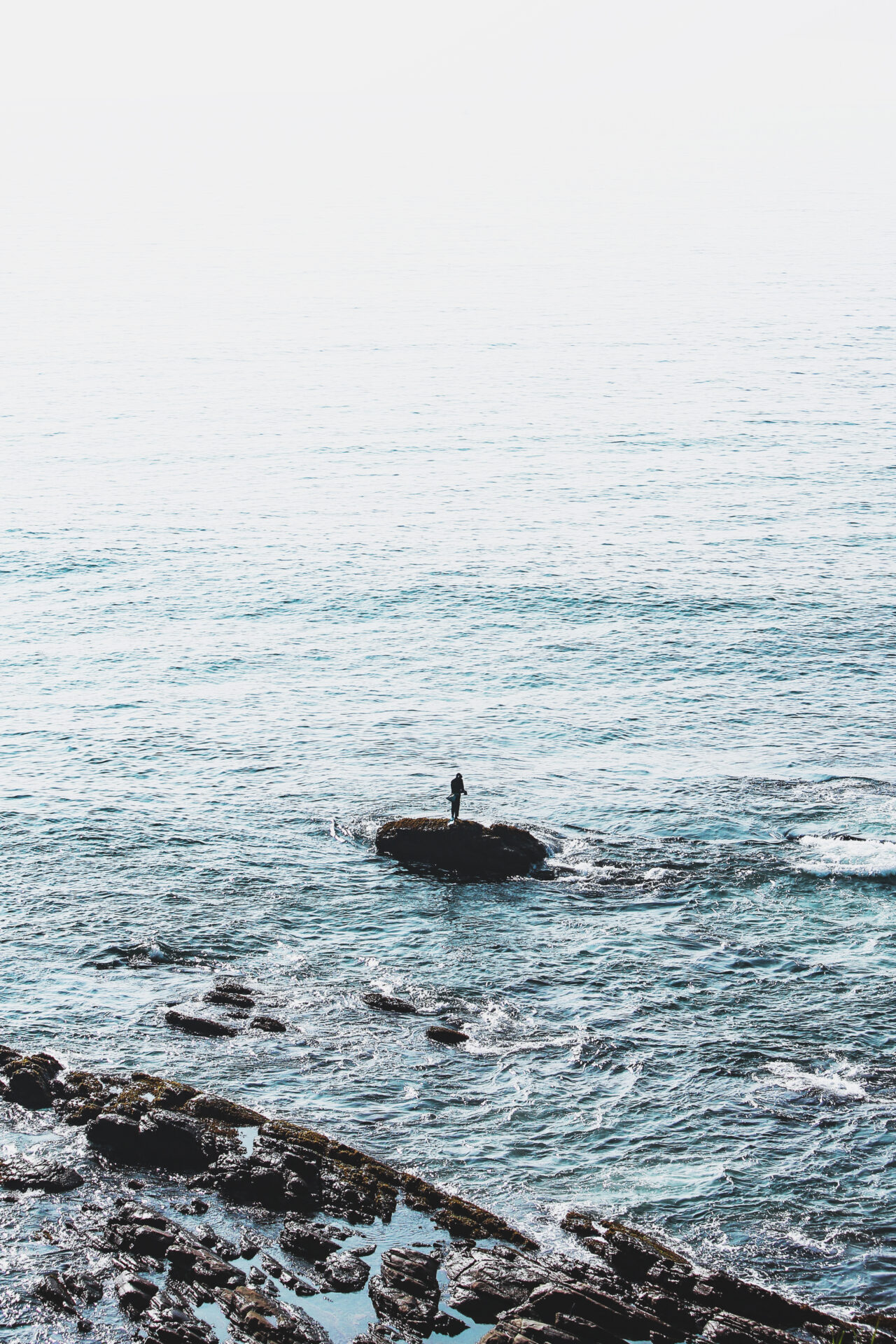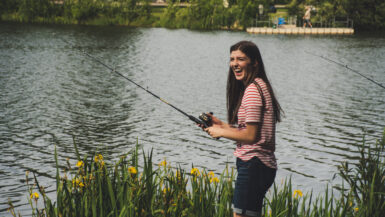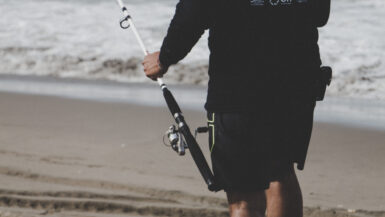Fishing is a pastime enjoyed by many, but few get to experience the satisfaction of catching a bluegill with a crappie jig. Bluegill are some of the most desirable of all panfish and crappie jigs are one of the most effective baits for catching them. By following a few simple steps and tips, anyone can learn how to fish for bluegill with a crappie jig and reap the rewards. With the right technique and lure, crappie jig fishing can yield bountiful catches of bluegill and other panfish. In this article, we’ll discuss the basics of how to fish for bluegill with a crappie jig that will help you increase your success at fishing for these tasty panfish.
Gear Needed
Choosing the right Crappie Jig when fishing for Bluegill is essential. The size, weight, and type of jig should be appropriate for the type of Bluegill you are targeting. Look for jigs with a realistic look and lifelike action, as well as one that is weighted for the depth at which you plan to fish.
Finding Bluegill Through a Fishing Locator
Using a fishing locator will give you the best idea of where to find the Bluegill. This can be especially helpful for anglers who are unfamiliar with the area, as it will give you an idea of the approximate size and location of the fish, as well as other helpful information.
The Right Bait for Bluegill
When it comes to bait, the most effective option will typically be worms or crickets. These baits will give the Bluegill a more realistic look and feel, and can also help to attract more fish. Consider pairing your jig with a few grubs or wax worms for an even more successful outing.
When and Where to Fish for Bluegill
Bluegill are typically most active during the spring, summer, and early fall months. In order to have success, anglers should look for bodies of water with slow-moving currents, cover such as logs or rocks, and should target the shallow waters and weedy areas that are the most popular among Bluegill.
Gear Needed
In order to properly fish for Bluegill with a Crappie Jig, anglers should have the following items on hand: a Crappie jig, a fishing locator, bait (worms, crickets, grubs and wax worms) and a fishing rod and reel. It is important to make sure to use a fishing rod and reel that is appropriate for the type of jig and bait being used, as well as the size and weight of the fish being targeted.
Finding an Ideal Spot
When fishing for bluegill with a crappie jig, choosing the right location is key. Look for areas where the water is shallow and there are plenty of plants or other aquatic life. Bluegill are usually found in ponds, lakes, and streams, as well as near aquatic vegetation. Bluegill will usually be near the surface of the water and will actively feed in warmer months.
Using the Right Bait and Lure
Once you’ve found an ideal spot for bluegill fishing, it’s important to choose the right bait and lure. Crappie jigs are great for bluegill, as they are less likely to be affected by the water’s current and can be easily retrieved when needed. Live bait such as worms, crickets, or minnows can also be effective when fishing for bluegill.
Reading the Conditions of the Water
Once you’ve chosen the right location and bait, it’s important to pay attention to the conditions of the water. Bluegill are more active during the warmer months, so it’s important to keep an eye out for temperature changes. Additionally, paying attention to the water movement and clarity will help you determine the best spot for casting your line.
Targeting the Right Depth
Finally, when fishing for bluegill with a crappie jig, it’s important to consider the depth you should target. Bluegill usually feed near the surface of the water but can sometimes move to deeper levels. When the water is clear, try using a slightly heavier jig so that you can target deeper areas. If the water is murky, a lighter jig may be a better choice.
Setting Up the Fishing Line
Before you can begin, you’ll need to gather the necessary fishing gear. You’ll need a fishing rod and reel, a supply of crappie jigs, a bucket for storing your catches, and a live bait container (if you are using live bait for your bluegill fishing).
Prepare the Line and the Hook
Once you have all the necessary gear, you’ll need to set up your fishing line. Start by attaching a hook to the end of your line. If you are using a crappie jig, make sure that the hook is securely attached to the jig before attaching it to the line. Next, tie a swivel onto the end of the line and attach a length of leader line to the swivel. The leader line should be at least a few feet in length and should be tied on securely.
Consider Using a Floater
If you are fishing in open water, you may want to consider using a floater to keep your line off the bottom. This will help keep your line out of the weeds and other underwater obstructions, and will make it easier to detect a bite. To attach a floater, simply tie it onto the line between the hook and the swivel.
Apply Bait to the Hook
Once your line is set up, it’s time to apply bait to the hook. If you are using a live bait, such as worms or crickets, carefully thread the bait onto the hook. If you are using a crappie jig, you can use a variety of baits, including worms, minnows, and artificial grubs. Be sure to apply enough bait to the hook so that you can detect the bite of a bluegill.
Cast Out the Line
When you are ready to start fishing, take a few practice casts to get a feel for the weight of your rod and reel. Once you feel comfortable, cast your line out into the water and wait for a bite. Keep an eye on the line at all times so that you can detect the tell-tale movement of a bluegill.
Reel in the Fish with Care
When you feel the bite, carefully begin to reel in your line. If the fish is pulling strongly, be sure to apply pressure steadily and consistently. If the fish is getting close to the surface, you may want to consider using a net to secure the catch. Once you have reeled in the fish, you can transfer it to the bucket or live bait container.
Set Up a Second Line
Now that you have completed your first catch, you can set up a second line with a new bait and start the process over again. Be sure to practice safe and responsible fishing, and you’ll be sure to enjoy a successful day of bluegill fishing.
Techniques for Reeling in a Bluegill
Fishing for bluegill with a crappie jig is best done during the summer months when the water temperatures in the lake or pond are warm. This is when the bluegill are more active, and will be easier to catch with this method. In addition, the warmer months provide more optimal weather conditions for fishing.
Preparing to Fish for Bluegill with a Crappie Jig
Before you can start fishing for bluegill with a crappie jig, it is important to make sure you have the proper gear. This includes a rod and reel combo designed for light tackle, and the right type of line. You should also have a variety of crappie jigs, in different colors and sizes, available to use.
Locating the Bluegill
After you have your gear ready, it is time to locate the bluegill. The best way to do this is by casting your jig around any type of weed beds, logs, or other structure found in the lake or pond. Bluegill will typically be found in these areas, as they offer them protection and a better chance to find food.
Techniques for Reeling in a Bluegill with a Crappie Jig
Once you have located the bluegill in the lake or pond, it is time to start reeling them in. The key to reeling in bluegill when using a crappie jig is to keep the jig near the bottom of the water and reel it in slowly. This will give the bluegill a chance to notice your bait and strike it.
When a bluegill does bite your jig, make sure to give it time to set the hook before reeling it in. The bluegill will strike the jig and then swim away, so you must allow time for it to do this before reeling it in. Also, make sure to keep your rod tip up, as this will help you feel the bite better.
Tips for Reeling in Bluegill with a Crappie Jig
When fishing for bluegill with a crappie jig, it is important to remember to be patient. Bluegill can be finicky, so you must take your time and wait for them to bite your jig. Additionally, it is important to use the right type of jig. Use lighter colors during bright days and brighter colors during cloudy days. Lastly, make sure to use a smaller size jig when fishing in deeper water. This will ensure that the jig stays near the bottom, where the bluegill will be located.
Troubleshooting Common Issues
When fishing for Bluegill with a Crappie Jig, it is important to use the right tackle and equipment. Make sure that you have the right kind of fishing rod, reel, and line. The line should be thin enough to allow the jig to move naturally in the water. If the line is too heavy, it will sink the jig too quickly and make it hard to catch the fish. Additionally, make sure that the jig is the right size for the kind of fish you are trying to catch. If the jig is too big, the fish may not be able to see it or will be afraid of it.
Hook Troubleshooting
The hook is one of the most important pieces of a Crappie Jig. Make sure that you are using the right size and type of hook. The hook should be sharp enough to penetrate the fish’s mouth and not bend or break easily when catching the fish. Additionally, make sure that the hook is the right size for the type of fish you are targeting. If the hook is too small, the fish may not be able to take the bait. On the other hand, if the hook is too big, it may be too visible to the fish and it may be scared away.
Bait Troubleshooting
When fishing for Bluegill with a Crappie Jig, it is important to use the right bait. Different types of bait work better in different conditions. For example, if the water is murky or has a lot of vegetation, a waxworm or maggot bait may work better than live bait. Additionally, make sure that the bait is the right size for the kind of fish you are trying to catch. If the bait is too big, the fish may not be interested in it. On the other hand, if the bait is too small, the fish may not be able to see it or be able to take it.
Location Troubleshooting
When fishing for Bluegill with a Crappie Jig, it is important to choose the right location. Look for areas with an abundance of weeds, logs, and other cover as these will attract the fish to the area. Additionally, look for areas with slow-moving or still water as they tend to be more productive than areas with fast-moving water. It is also important to pay attention to the time of day and the season as certain fish may not be active during certain times of the day or the year.
Retrieval Troubleshooting
One of the most important factors in catching Bluegill with a Crappie Jig is the retrieval technique. The jig should be retrieved slowly, with occasional pauses. This allows the jig to flutter in the water, which makes it more visible to the fish. Additionally, make sure that the jig is retrieved in a way that is natural to the fish. If the fish are becoming spooked or refusing to take your bait, try different speeds and techniques until you find one that works.
Fishing for Bluegill with a Crappie Jig – Fun for the Whole Family
Fishing for bluegill with a crappie jig is a great activity for the whole family. It is both easy and inexpensive as jigs and poles can be found at any sporting goods store. When fishing for bluegill, the key is to use light jigs that are no more than half an ounce. When fishing around vegetation, use a single hook jig, while a two hook jig works best when fishing open water. To make the presentation of the jig more enticing, combine a slow retrieve or twitch with a pause. By following these simple steps and techniques, anyone can join in on the fun of fishing for bluegill with a crappie jig.





Leave a reply